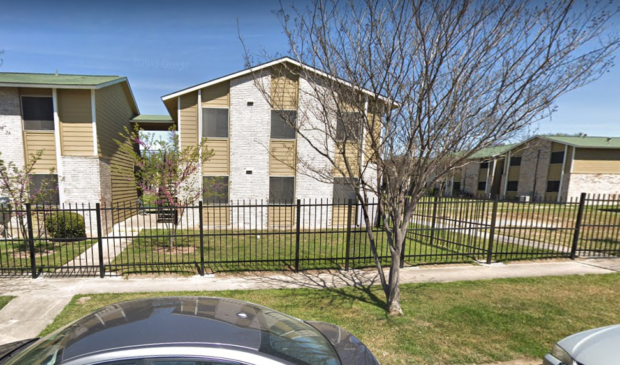Zoning request highlights role of commission, need for new land use code
Thursday, July 25, 2019 by
Ryan Thornton The Planning Commission went against the official staff suggestion Tuesday evening, recommending the addition of a Vertical Mixed Use designation to the current General Commercial Services-Mixed Use Combining District-Neighborhood Plan Combining District zoning of 3706 Goodwin Ave., near the intersection of Airport Boulevard and Springdale Road.
Michael Whellan, who was representing the applicant, said the vertical mixed use zoning, located in the heart of the Imagine Austin Springdale Station activity center, will make it possible to redevelop the site with the housing, both market-rate and affordable, that the area needs.
Because the site is also located in a federal opportunity zone, providing tax benefits to investors in exchange for economic investment, Whellan urged the city to take the opportunity to secure housing at the site. Since investors in opportunity zones stand to gain more tax benefits with commercial and office space than with housing, Whellan said, denying this request could lead to exclusively commercial or office redevelopment in the future.
The site owner’s plan is to replace the current 69-unit multifamily complex with a vertical mixed-use development, including 380-400 housing units, 10 percent of which will be reserved for households earning no more than 60 percent of the median family income.
While housing is already a designated use of the site, the vertical mixed-use zoning will lower required parking from 80 percent to 60 percent, remove all limits on floor area ratio and allow for more units, with the condition that the site includes the affordable housing units.
To soften the blow for the nearly 70 families that will be required to relocate, at least temporarily, the applicant is providing a number of tenant protections beyond those mandated by the city. Tenants will receive at least 180 days notice before being asked to relocate, be given advance notice when new units are available as well as a $500 credit on their first month of rent, and be compensated $1,200-$2,000 for moving and relocation expenses.
“We acknowledge it’s disruptive, and this is a form of compensation for that disruption,” Whellan said.
City staff, however, could not recommend the additional entitlements, noting it would be the only vertical mixed-use site within a four-mile stretch along Airport Boulevard between Manor Road and the southeastern end of the boulevard near U.S. Highway 183. According to the staff report, the site’s 1.37-mile distance from the nearest Future Core Transit Corridor makes it a poor candidate for vertical mixed use.
Whellan highlighted that the Core Transit Corridors and Future Core Transit Corridors are an outdated point of reference in light of recent growth patterns. Identified in May 2005, the city’s Core Transit Corridor Map does not identify either Airport Boulevard or Springdale Road as Core or Future Core Transit Corridors. In sharp contrast, the Austin Strategic Mobility Plan, adopted this February, includes both corridors in its Transit Priority Network Map.
In addition to future growth projections, the property is now situated between two high-frequency bus routes, Routes 2 and 300, and local Route 350 running along Airport Boulevard, and has a bus stop directly in front of the site.
After motioning to recommend the applicant’s request, Commissioner Greg Anderson said the area is perfect for the additional housing being proposed.
“If Springdale and Airport aren’t suitable for (vertical mixed use) then I honestly don’t know where in the city of Austin is,” Anderson said. “The idea of getting at least 40 homes at 60 percent (median family income) and seeing this on this great corridor just makes all the sense in the world to me.”
After the vote, Heather Chaffin, with the Planning and Zoning Department, told the Austin Monitor that city staffers are required to follow the regulations outlined in the city code, even if it seems to contradict actual growth projections and goals outlined in plans like Imagine Austin or the ASMP. The Planning Commission and Council, she added, are free to do what makes the most sense, but staff members still have their hands tied. Hopefully the new code will solve that, she said.
In light of what he deemed “antiquated” transit plans still guiding staff, Commissioner James Shieh said the commission needs to do its best to respond to what’s going on as the city awaits a new, improved development code.
Having twice postponed the item, the commission passed the recommendation Tuesday 9-0-1, with Carmen Llanes-Pulido, brand-new to the commission, abstaining.
Photo courtesy of Google Maps.
The Austin Monitor’s work is made possible by donations from the community. Though our reporting covers donors from time to time, we are careful to keep business and editorial efforts separate while maintaining transparency. A complete list of donors is available here, and our code of ethics is explained here.
You're a community leader
And we’re honored you look to us for serious, in-depth news. You know a strong community needs local and dedicated watchdog reporting. We’re here for you and that won’t change. Now will you take the powerful next step and support our nonprofit news organization?











